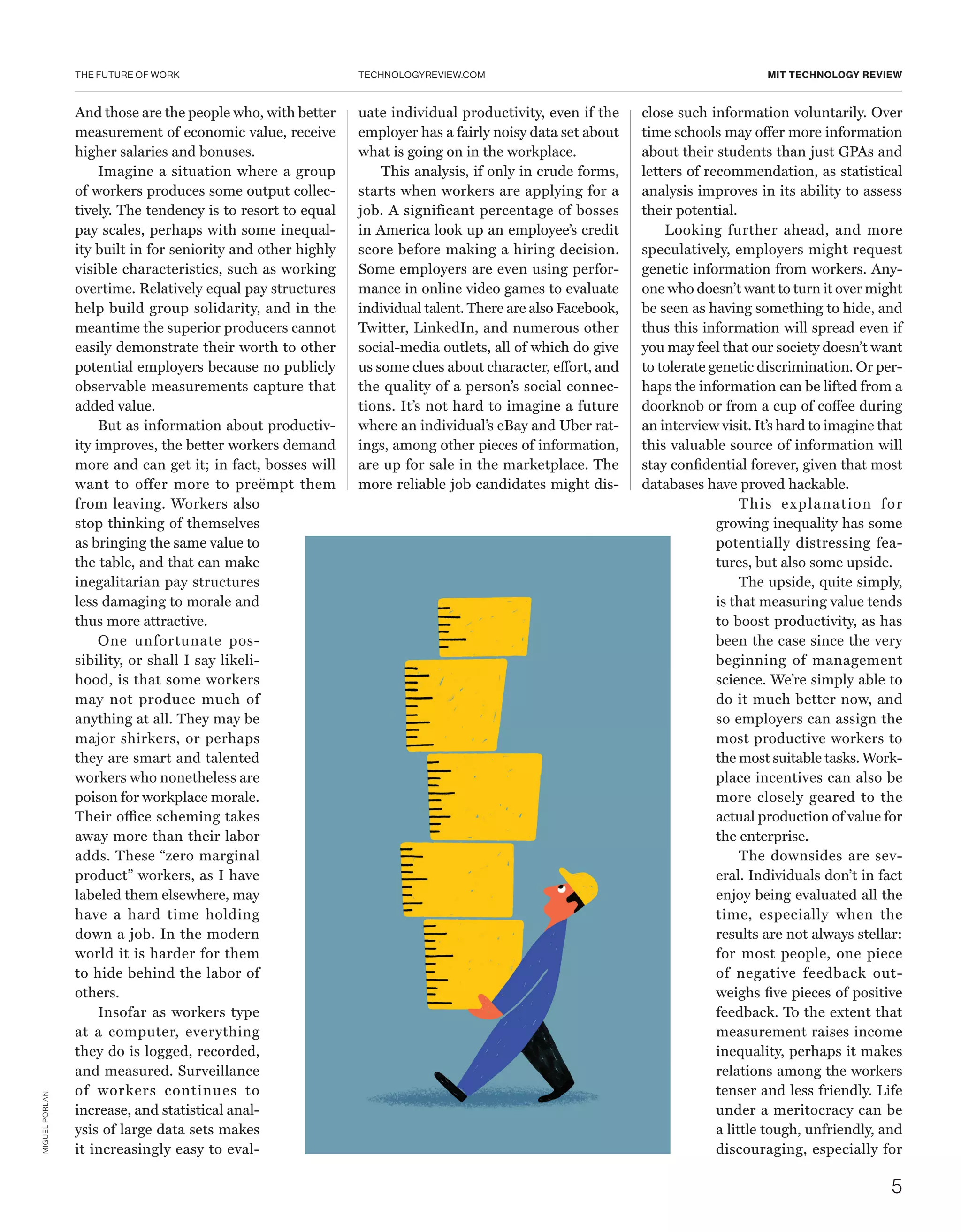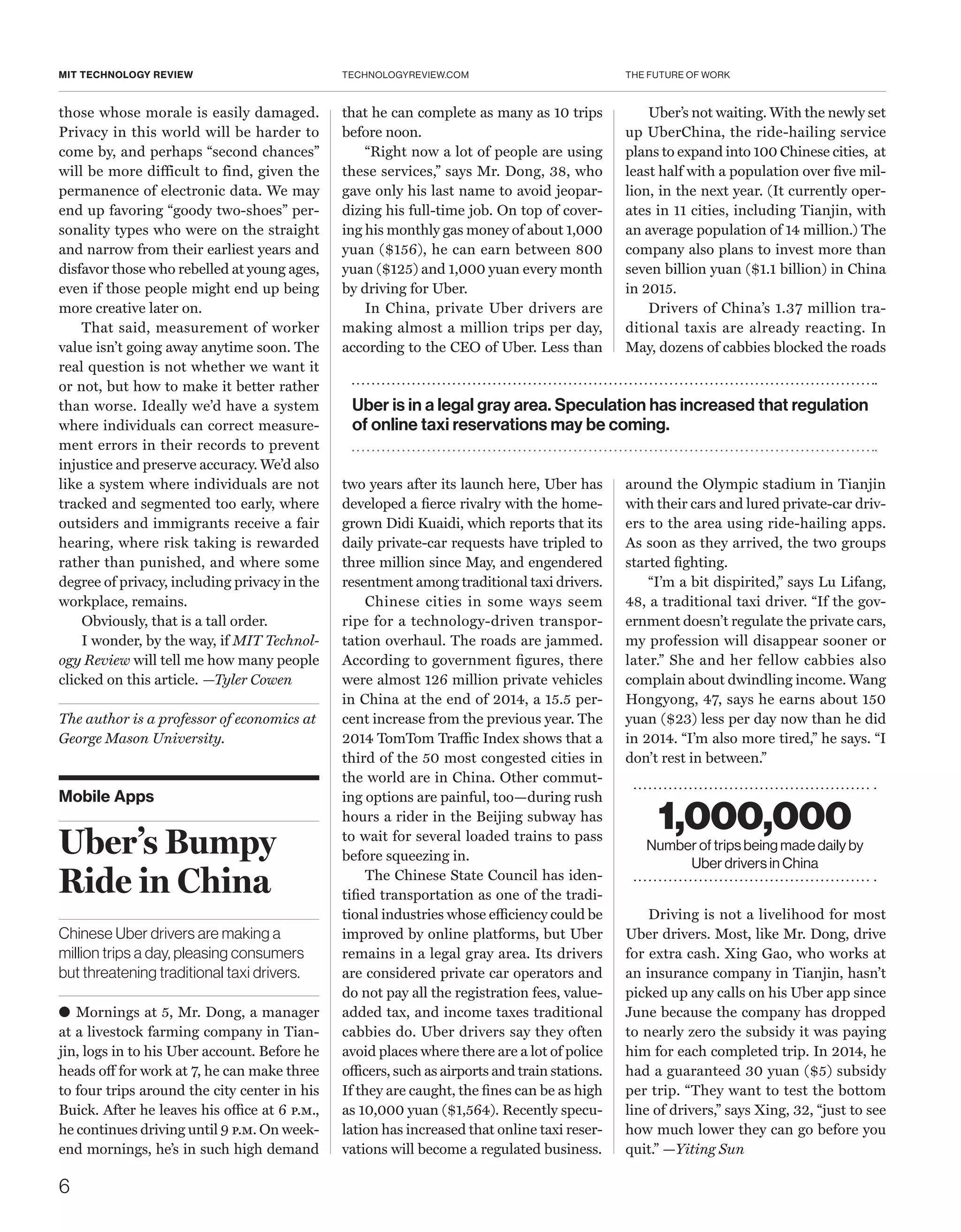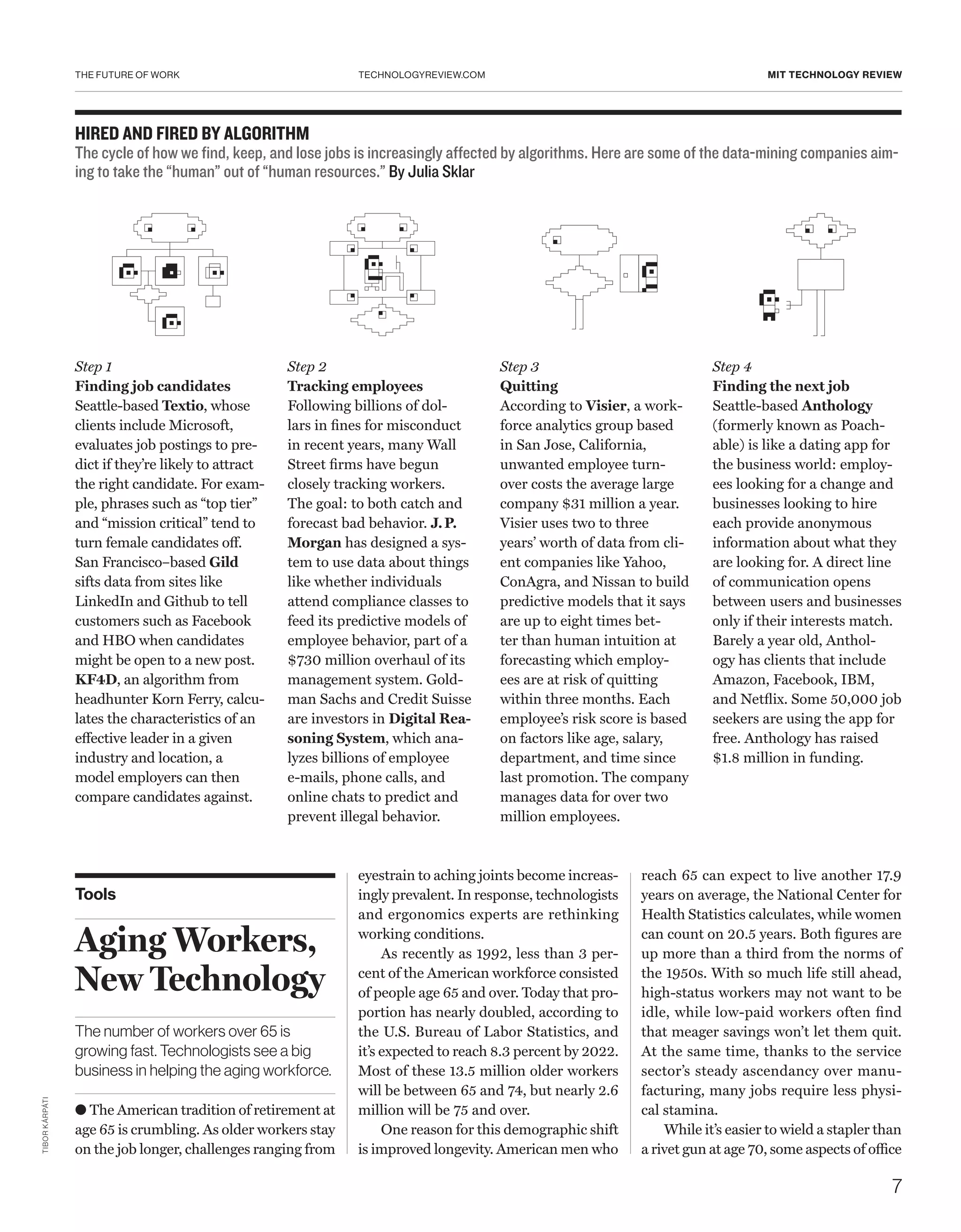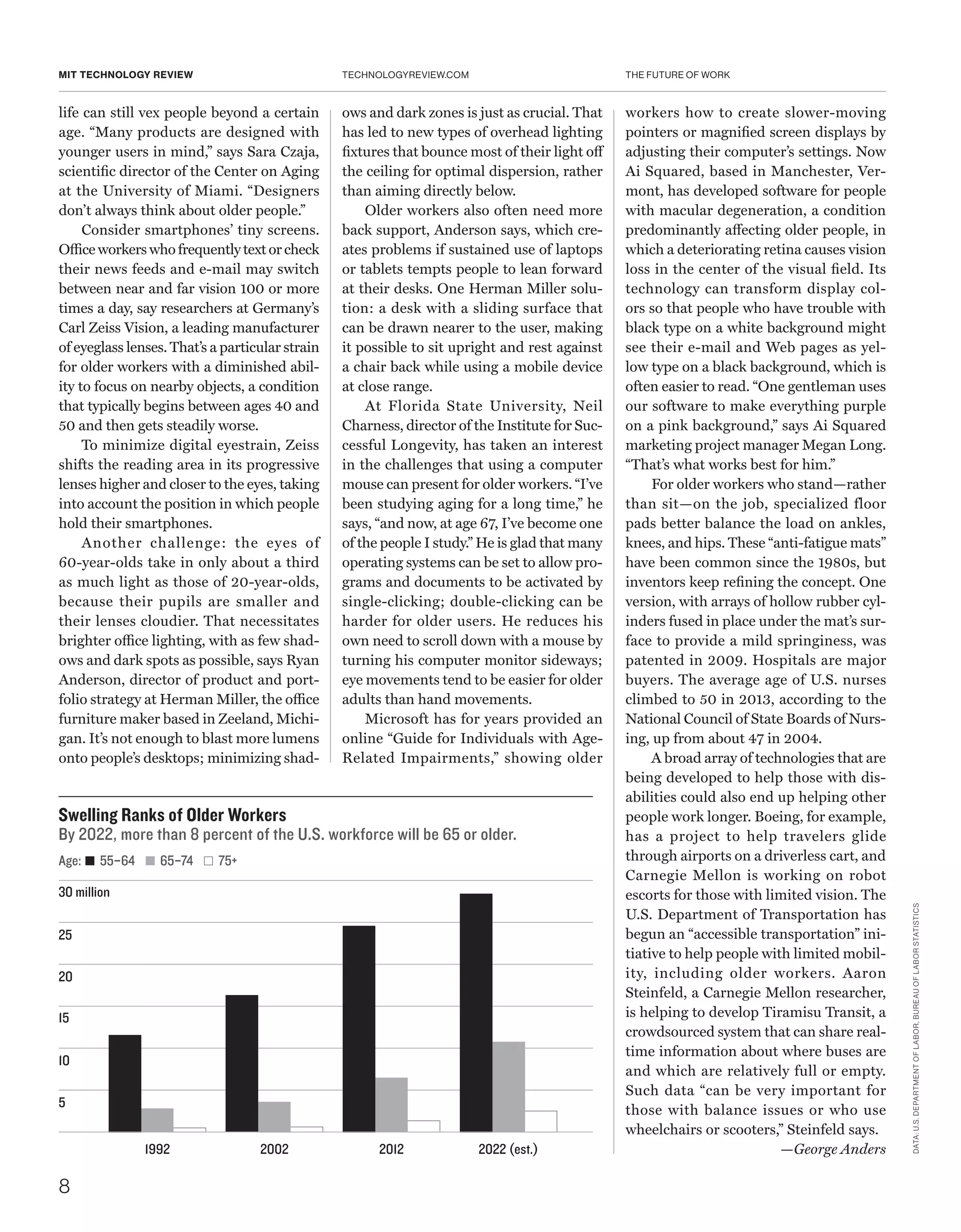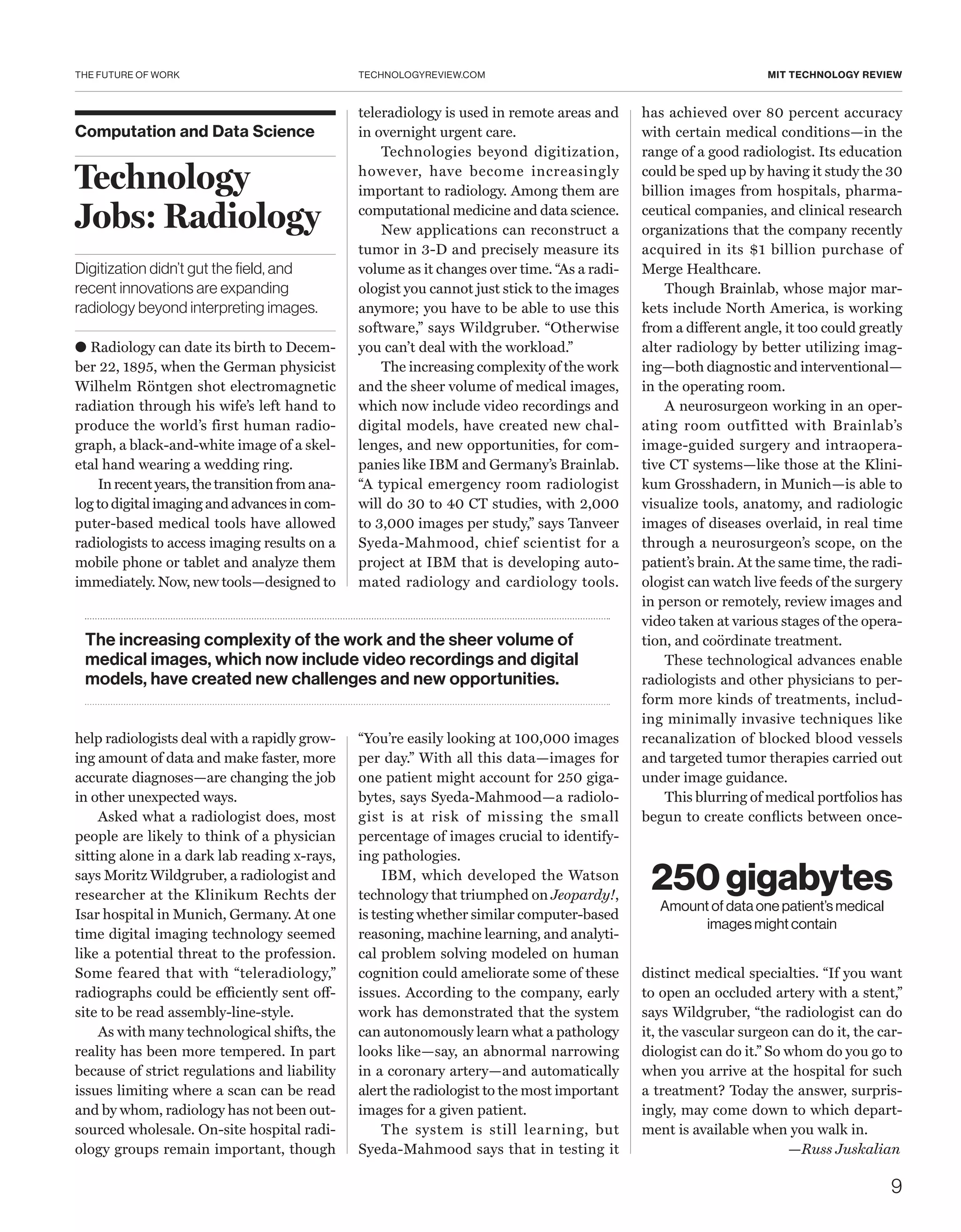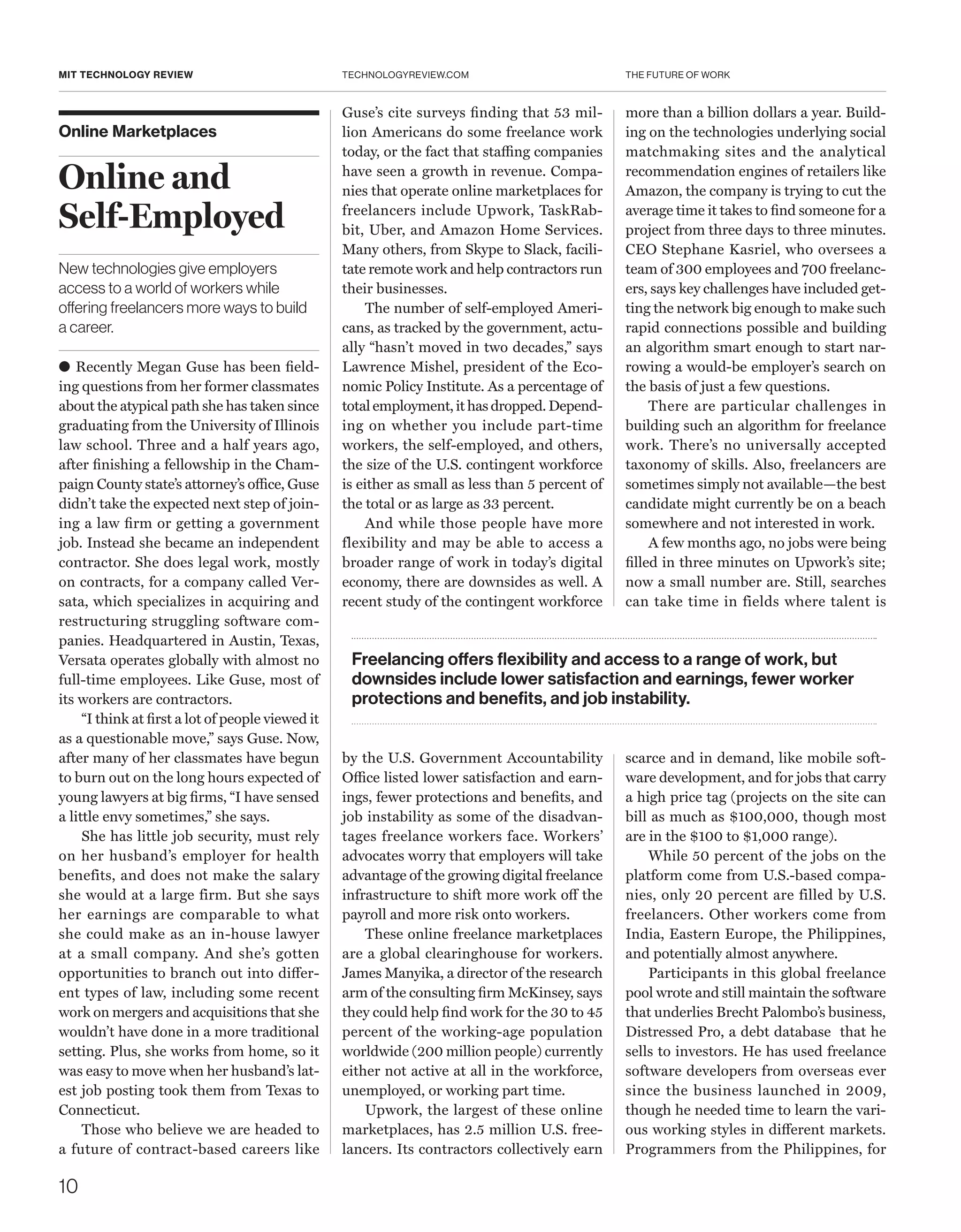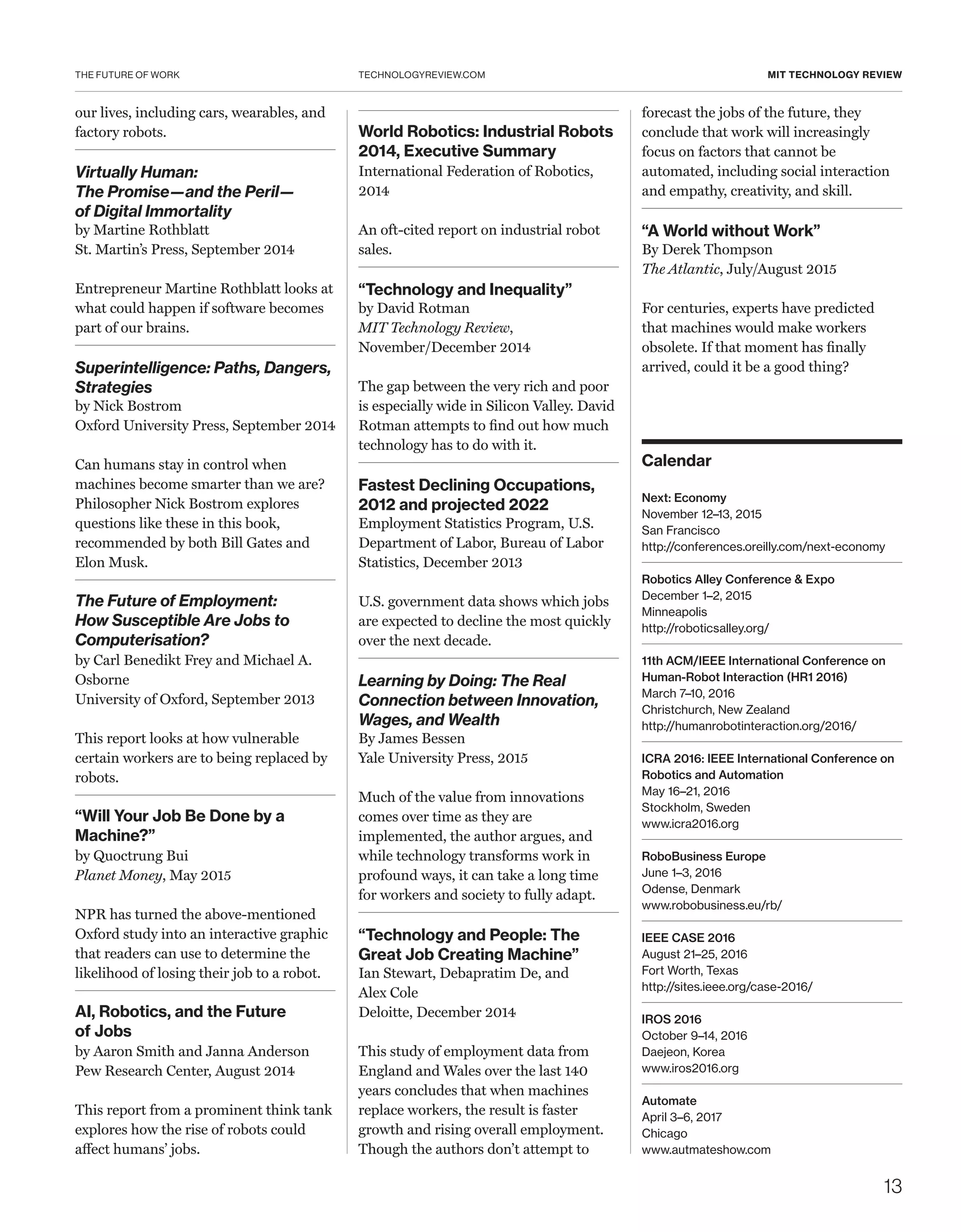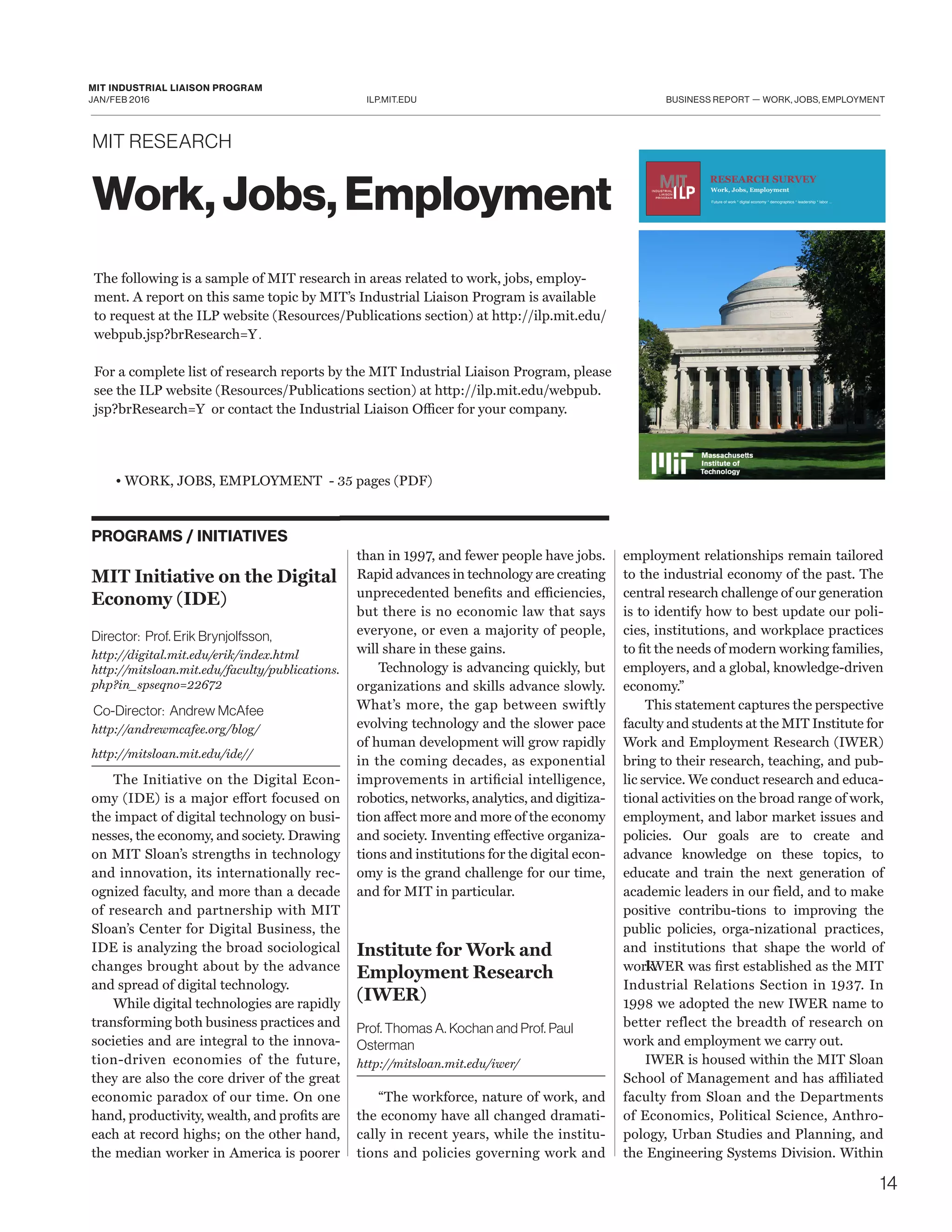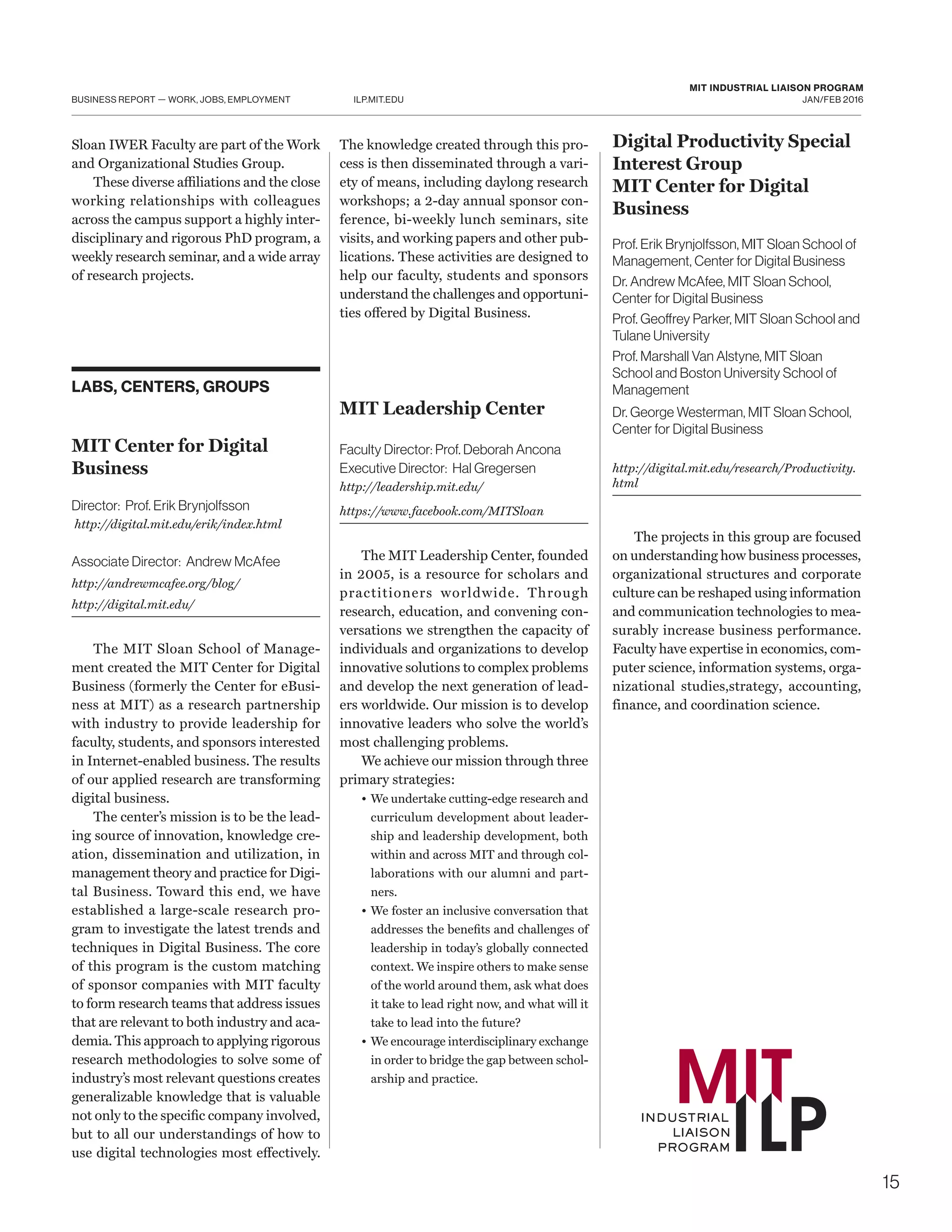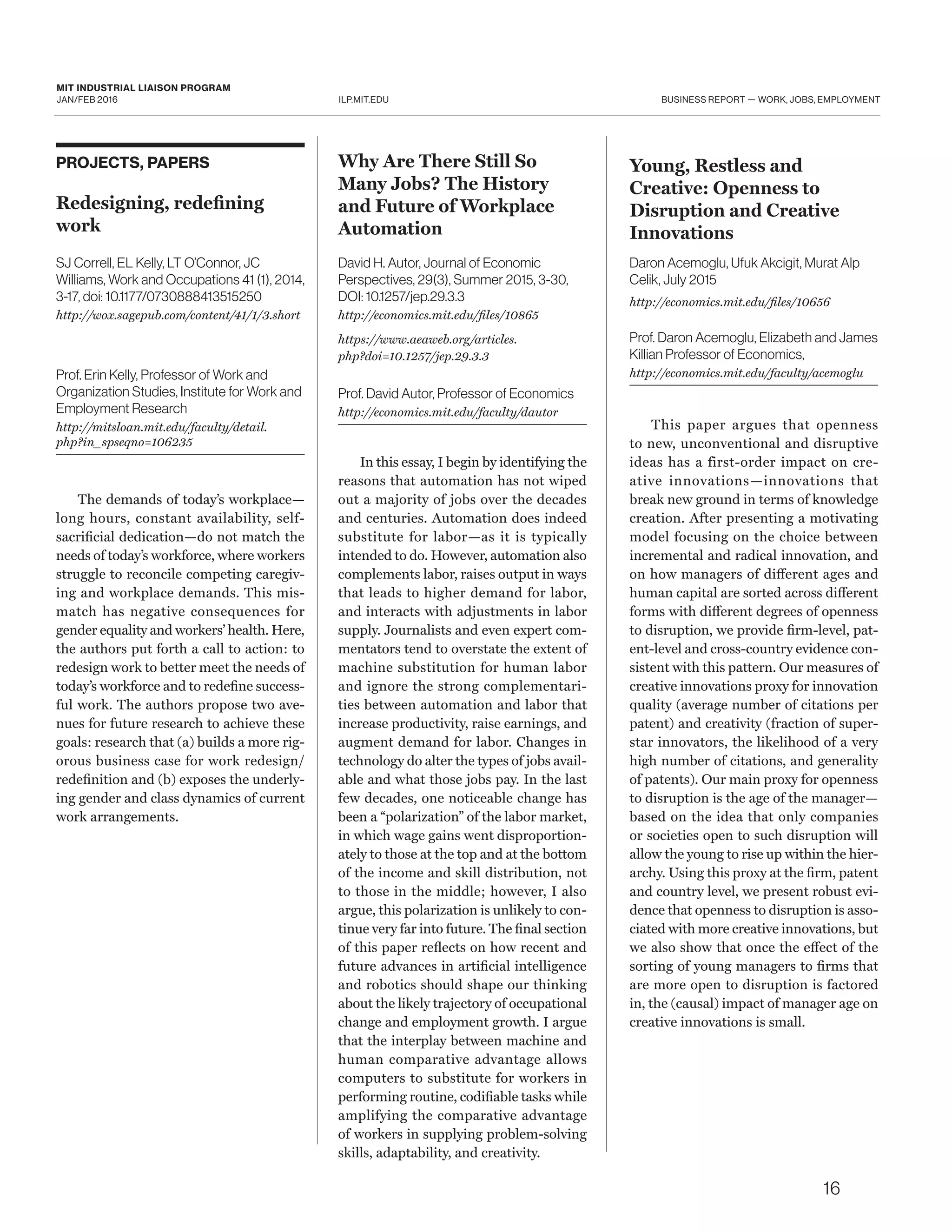This document discusses how technology is changing the nature of jobs and the future of work. Key points:
1) Digital technologies are automating routine tasks and jobs that involve structured processes, while human workers will likely shift toward tasks requiring creativity, social skills and innovative thinking.
2) New online platforms are creating "networked work" where freelancers connect directly with clients, taking on more risks but also gaining more control over their work. However, this transition to more flexible work arrangements is not painless.
3) Demand is growing for STEM jobs across many industries as data analysis and computing become more widespread. While some jobs will be automated, technology also has the potential to create new types of jobs
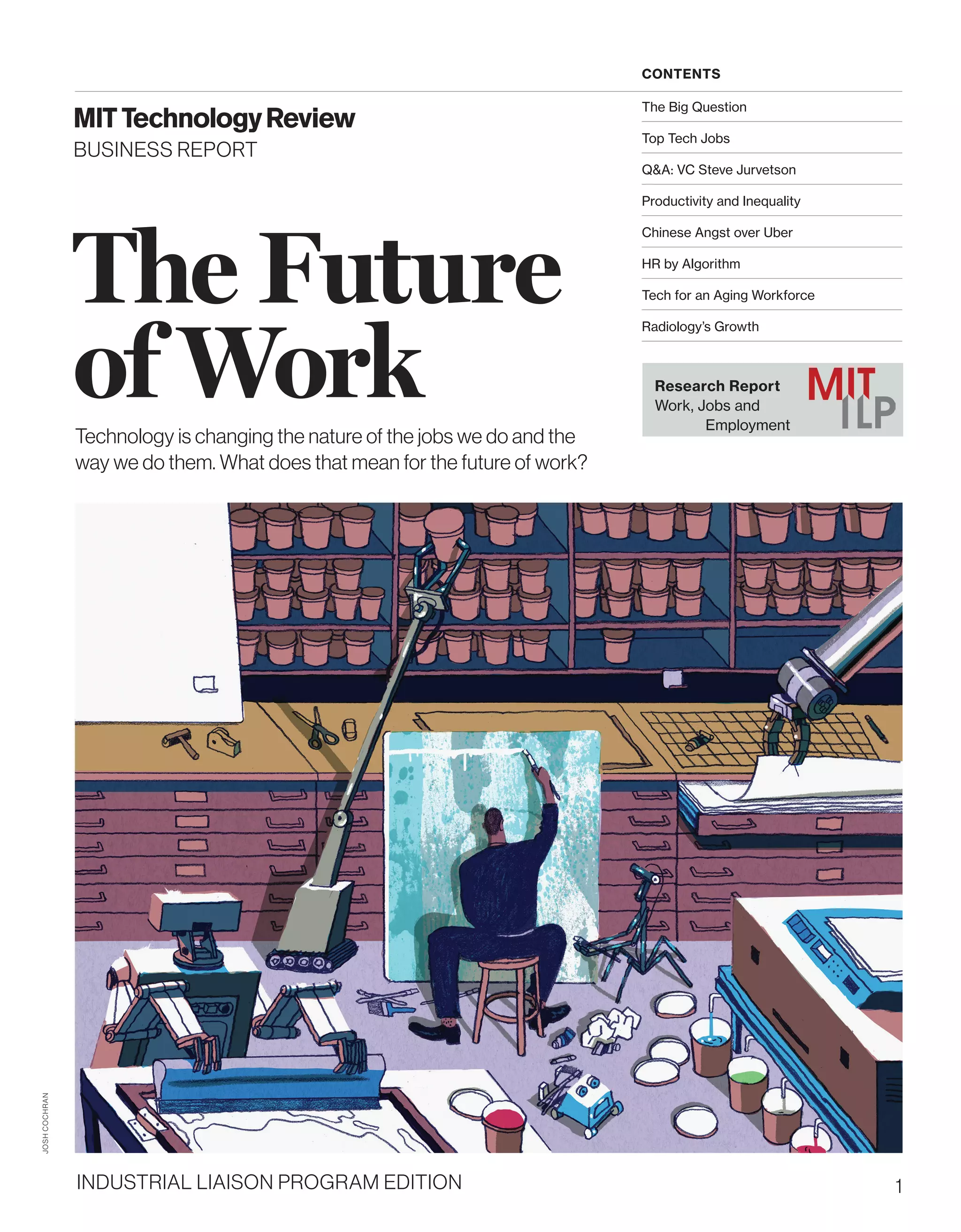
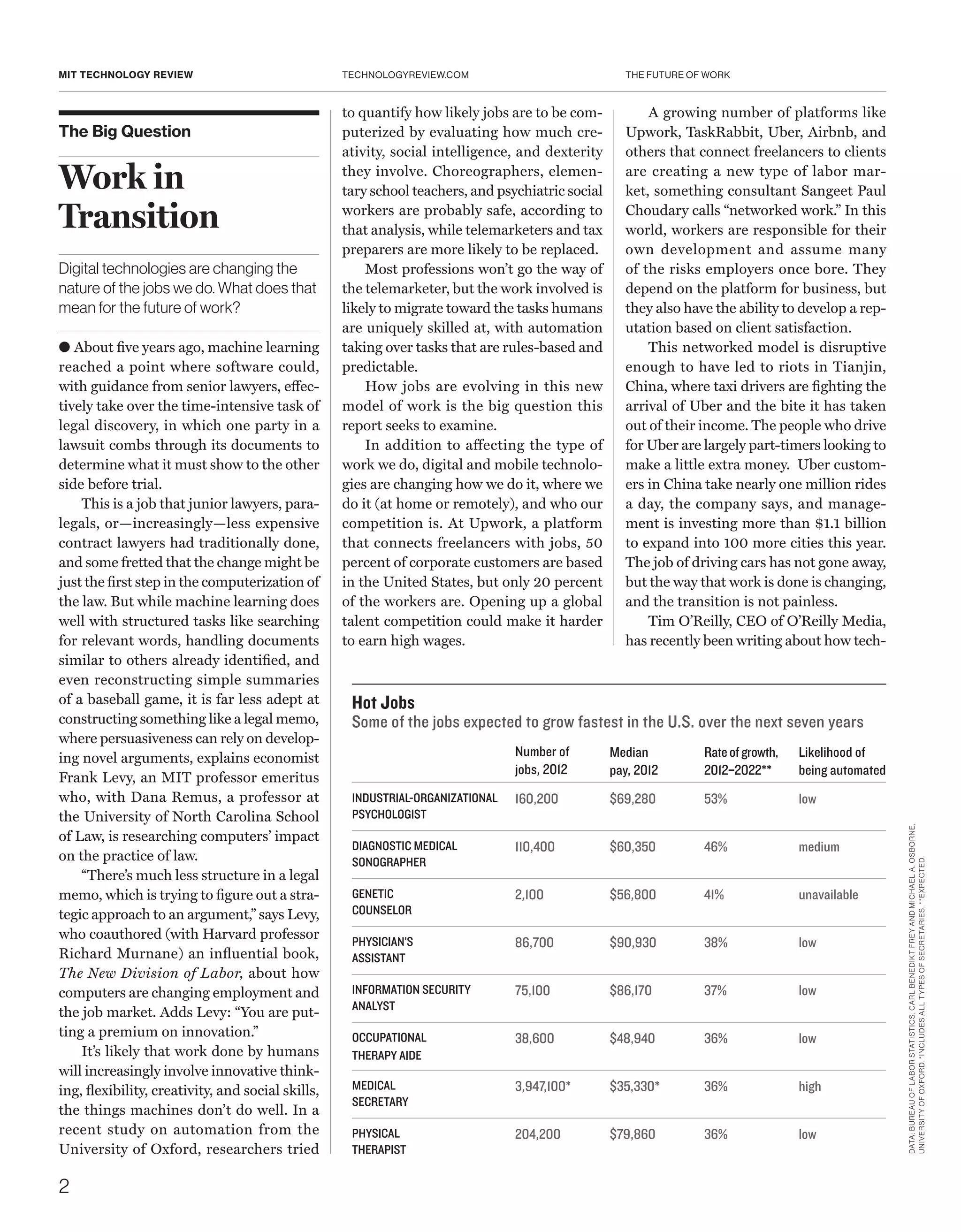
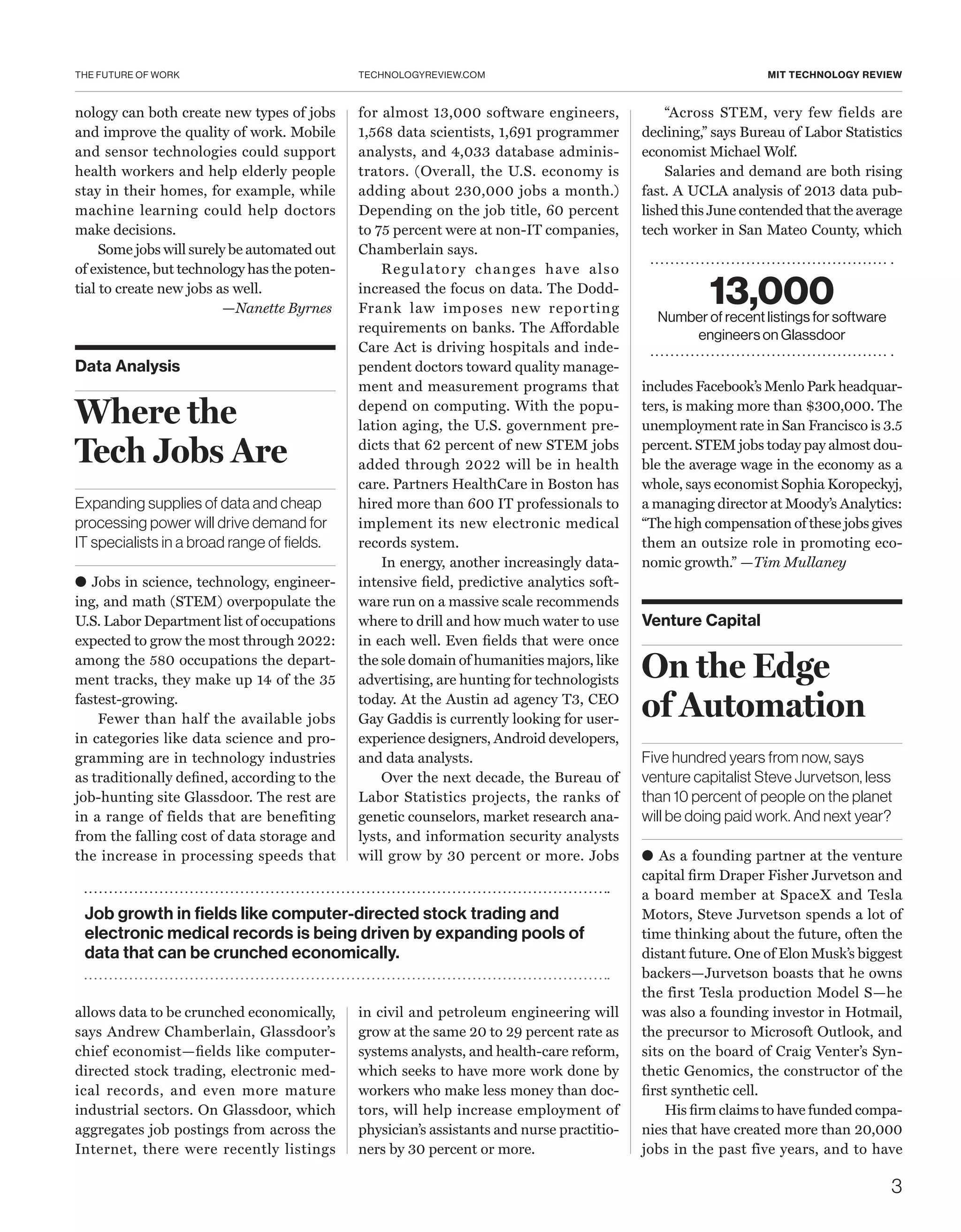
![THE FUTURE OF WORK
4
TECHNOLOGYREVIEW.COMMIT TECHNOLOGY REVIEW
brought nearly two dozen companies to $1
billion in value before exiting. Jurvetson
spoke to Business Reports senior editor
Nanette Byrnes about why he thinks 90
percent of people will be unemployed in
500 years and how we might transition to
that sharply different future.
Are today’s new digital technologies
destroying or creating jobs?
I absolutely believe in the near to medium
term there is going to be net job creation,
as there always has been. Think of all the
Uber jobs. The opportunity is not yet fully
tapped to, in a sense, distribute [over the
Internet] the service economy. The ser-
vice economy is bigger than the goods
economy, so the online equivalent should
be even bigger and more powerful than
the online marketplace for physical goods.
Many of these new jobs, including those
at Uber, are taking shape on what you call
the “edge of automation.” Do you fear
that these jobs might quickly disappear
as technology keeps evolving?
Everything about Uber has been auto-
mated except for the driver. The billing,
the fetching—every part of it is a modern,
information-centric company. Interest-
ingly, what that means is as soon as auto-
mated vehicles arrive, that driver is easily
removed. You don’t have to restructure
any part of that business.
What you’re farming out to humans
today are those things that computers just
barely can’t do. We know from Moore’s
Law and improvements in computing that
in two or three years [much of this] work
will be automated.
If a startup or new business venture
has created a job that involves human
labor, it probably has done so in a way
that is pretty marginal. Whether you’re a
technology enthusiast or a detractor, the
rate at which this will shift is probably
going to be unprecedented. There will be
massive dislocation.
Which jobs will survive?
In the long run, 500 years from now,
everyone is going to be involved in some
kind of information or entertainment.
Nobody on the planet in 500 years will
do a physically repetitive thing for a living.
There will be no farmers, there will be no
people working in manufacturing. To me
it is an impossibility that people would do
that. People might do it for fun. You might
have an organic garden in your backyard
because you love it. Five hundred years
from now I don’t know if even 10 percent
of people on the planet have a job in the
sense of being paid to do something.
It’s hard to imagine what that life would
be like.
It pretty much will be what life was like for
most of human history—just without the
gruesome servitude. The concept of a “job”
is pretty recent. If you go back a few hun-
dred years, everyone was either a slave or a
serf, or living off slave or serf labor to pur-
sue science or philosophy or art. We’ll live
off the production of robots, free to be the
next Aristotle or Plato or Newton. Unless
we’re miserable without doing busy work.
Is there some way, some government
policies or strategies, to minimize the
pain of such a dramatic shift?
I don’t think that anyone in Washington
is going to get their head around this and
make meaningful change. No politician
has a 50-year horizon. I see zero chance
that long-term thinking will govern policy.
The knock on Silicon Valley today is that
it’s not taking on big problems either.
I do lament how many investors focus
on all the short-term sugar buzz of some
marginal improvement in something—
nothing history books are ever going to
be written about. In many cases these are
quick and easy ways to make money. I do
think there are more and more entrepre-
Data Analysis
The Measured
Working Man
The technology that illuminates worker
productivity and value also contributes
to wage inequality, Tyler Cowen argues.
● Discussions of income inequality typi-
cally focus on how information technol-
ogy raises the return to skilled labor, or
on the rise of global trade, or perhaps on
the way that politics skews power toward
the rich and well-connected. But there’s
another fundamental driver of income
inequality: the improved measurement
of worker performance. As we get better
at measuring who produces what, the pay
gap between those who make more and
those who make less grows.
Consider journalism. In the “good
old days,” no one knew how many peo-
ple were reading an article like this one,
or an individual columnist. Today a digi-
tal media company knows exactly how
many people are reading which articles
for how long, and also whether they click
through to other links. The exactness and
the transparency offered by information
technology allow us to measure value
fairly precisely.
The result is that many journalists
turn out to be not so valuable at all. Their
wages fall or they lose their jobs, while
the superstar journalists attract more
Web traffic and become their own global
brands. Some even start their own media
companies, as did Nate Silver at FiveThir-
tyEight and Ezra Klein at Vox. In this
case better measurement boosts income
inequality more or less permanently.
In any organization or division many
colleagues do good work, but only so
many would be truly difficult to replace.
“Five hundred years from now, everyone is going to be involved
in some kind of information or entertainment ... There will be no
farmers, there will be no people working in manufacturing.”
neurs all the time that think big. Those
are the people we should be finding and
funding. Most of them will fail, but the
ones who succeed will change the world,
and that is progress.](https://image.slidesharecdn.com/e293eafa-d04b-46d9-8e11-4b537e6f86b0-160916181928/75/MIT-THE-FUTURE-OF-WORK-201616-02-Work-4-2048.jpg)
